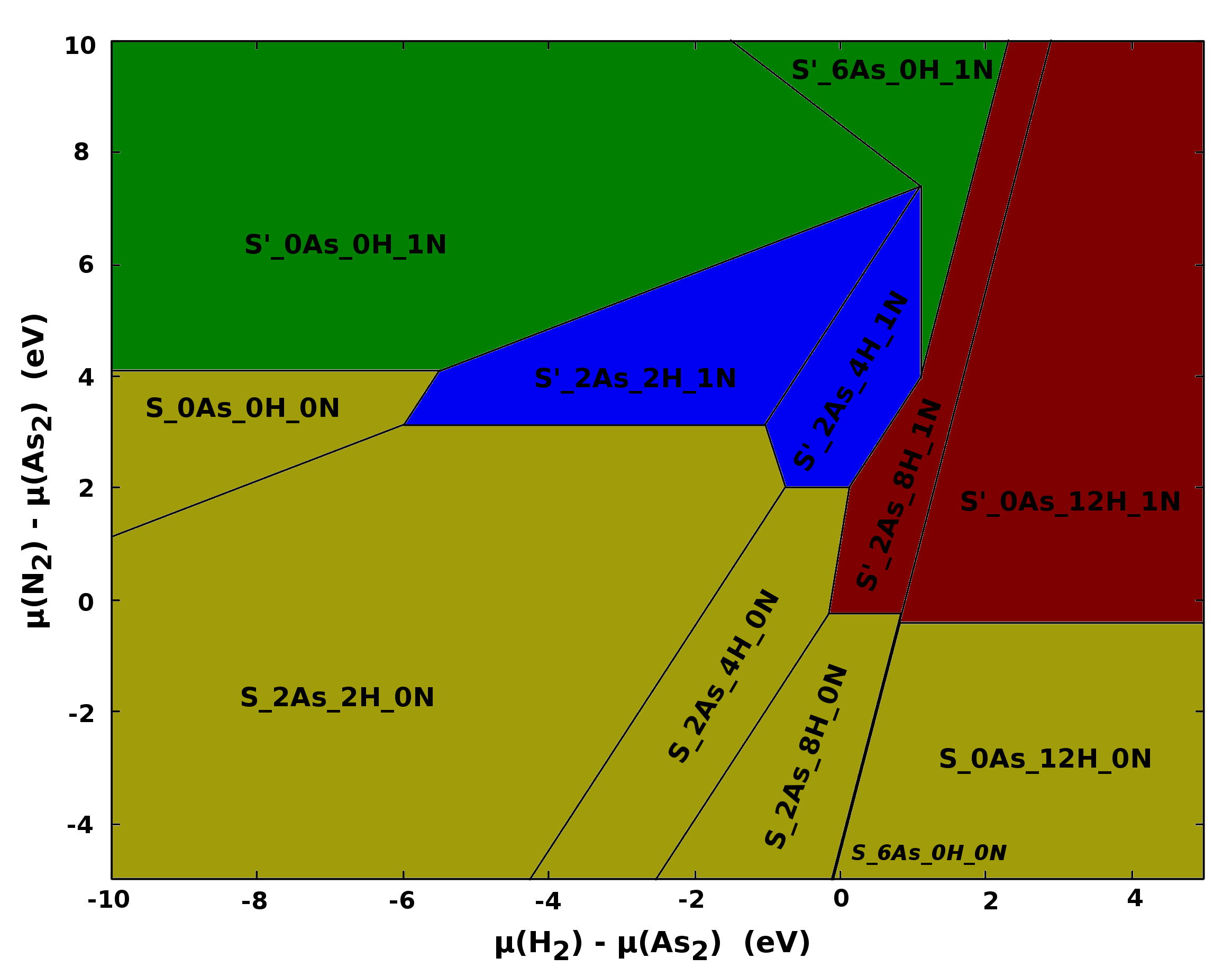| Search for content and authors |
Ab initio Study of GaAs(100) Surfaces Under As2, H2, and N2 Influence, as a Model for Vapor-Phase Epitaxy of GaAs1-xNx |
| Hubert Valencia , Yoshihiro Kangawa , Koichi Kakimoto |
|
Kyushu University, Fukuoka, Japan |
| Abstract |
(In1-y)GayAs1-xNx materials are the focus of a growing interest to provide an efficient layer for four-junction solar cell[1]. However, the high quality growth of a simpler GaAs1-xNx material remain an experimental challenge, due to low nitrogen content (x) and formation of defects and/or incorporation of impurities that are linked to the growth conditions[2]. In order to better understand the influence of these conditions, we examine the atomic and electronic structures of GaAs(100) surfaces by ab initio calculations, within the adsorption of As2 and H2 molecules, and As ↔ N substitution, as a model for GaAs(100) surfaces during vapor-phase epitaxy. Using a simple model, derived from previous studies[3], it was shown to be possible to examine the composition change of surfaces by first studying elementary adsorption and substitution reactions, then considering the relative stability of the resulting surfaces against the chemical potential of As2, H2 and N2 gas (see figure). Finally, for this simple model a picture of the temperature and pressure stability domains for each surfaces can be drawn, which should allow us to better understand and control the surface states under specific growth conditions. We found that several different configurations are possible for N incorporation (N-H2, N-H and N site), depending on the conditions. Since this incorporation often leads to the apparition of defects and impurities, linked to the presence or absence of H atoms on the N site, this result could enable a better understanding and control of the experimental condition needed to realized a high quality crystal growth.
Figure. GaAs(100) surfaces under As2, H2 and N2 conditions. The surface is called S when not N substituted, and S' otherwise; followed by the number of As, H and N atoms added as compared to the free (S_0As0H0N) surface. Yellow region stands for N-free surfaces, while red, blue and green one represent N-H2, N-H, and N sites respectively. The S_6As_0H_0N surface is placed in a narrow domain between S_2As_8H_0N and S_0As_12H_0N. [1] H.S. Lee et al., J. Cryst. Growth 275, pp. e1127-e1130 (2005). [2] J. Kawano, Y. Kangawa, T. Ito, K. Kakimoto, and A. Koukitu, J. Cryst. Growth 343, pp. 105-109 (2012). [3] J. Kawano, Y. Kangawa, and K. Kakimoto, Jpn. J. Appl. Phys. 51, pp. 81-84 (2012). |
| Legal notice |
|
| Related papers |
Presentation: Oral at 17th International Conference on Crystal Growth and Epitaxy - ICCGE-17, General Session 10, by Hubert ValenciaSee On-line Journal of 17th International Conference on Crystal Growth and Epitaxy - ICCGE-17 Submitted: 2013-04-11 10:34 Revised: 2013-07-29 23:59 |